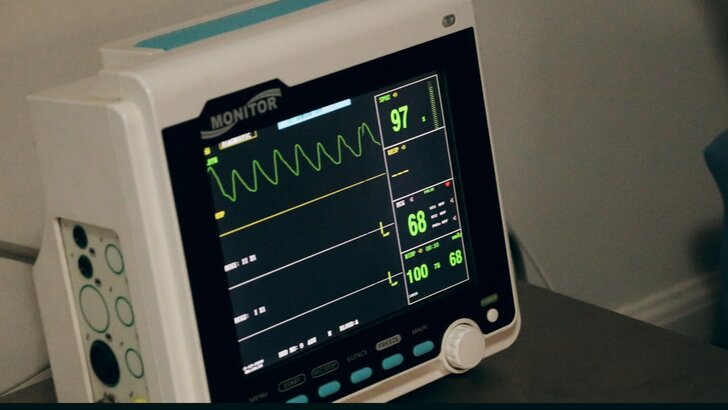
Study Finds Blood Clotting Issues Could Happen to The Pandemic Affected

You must count yourself extremely lucky if you haven’t been affected by the pandemic virus that has claimed over 210 million people globally. But if you have caught it and are recovering, then this is an important article for you.
Regardless of whether it’s in the form of a mild fever, cold, or cough, the effect of this virus is bound to show up later in the future. A majority of those affected recover within a few weeks, but quite a few continue to experience further symptoms post-recovery. According to the CDC (Centers for Disease and Prevention), those who’ve been through the virus should expect experiencing a wide range of new or returning health problems later on.

Sharon McCutcheon/Unsplash | A study has found that people who have recovered from the pandemic virus are likely to experience a range of symptoms afterwards
Presently, a new study by researchers from RCSI University of Medicine and Health Sciences in Dublin has found out that patients recovered from the virus show higher measures of blood clotting, which also explains issues such as fatigue, shortness of breath, and palpitations.
The discovery of higher blood clotting in affected patients
To get a clear understanding of the symptoms developed post-pandemic, over 50 people who were affected by the virus were observed for a period of 68 days. The data collected clearly indicated that the clotting markers were higher in their blood as compared to a healthy group of people. Though the clotting markers were higher for those patients who were hospitalized, it was also high for the patients that stayed at home.
That being said, experts believe that it’s still too early to make a significant correlation between the effects of the pandemic and the possibilities of higher clotting. Nevertheless, it’s important to try and find these links and relations to get a clear understanding of how to treat the patient from the after-effects of the pandemic.

SJ Objio/Unsplash | Researchers have discovered higher chances of blood clotting to develop in patients who were hospitalized due to the virus
Timeline and symptoms post-pandemic
Speaking about the exact symptoms post-recovery, ex-patients can experience them a few weeks or even months after the infection. The most common long-term symptoms are fatigue, shortness of breath, palpitations, lingering loss of taste and smell, and anxiety. It is still uncertain how many of those affected will continue to experience these symptoms in the future. For now, the factors of blood clotting can be used to identify the patients that are most likely to face them.
Moreover, due to the rise in mutations from the original strain, younger patients are likely to have further long-term health effects. The strain tends to activate the body’s natural clotting pathways in the tissues, causing significant inflammation. According to doctors, there are only a few treatment options available for those with future complications, and most of these issues will sort themselves out with constant monitoring.

Jair Lázaro/Unsplash | Experts say constant health monitoring can help patients overcome post-pandemic symptoms
Bottom Line
We know that after reading all the facts, you might feel a little uneasy. But rest assured, there’s absolutely no need to panic. Yes, there is a possibility that those affected by the virus may face complications in the future, but with advancements in the medical field, better treatment options will be available.
More inMedicare
-
`
Why Are Men Taller Than Women? New Genetic Study Finds Clue
For centuries, the average height difference between men and women has been noticeable—men generally stand about five inches taller. While environment...
July 23, 2025 -
`
How Upcycled Beauty Ingredients Are Reshaping the Industry’s Future
The beauty industry is going through a big shift — and it’s not just about trends. As waste problems grow and...
July 17, 2025 -
`
A Look Inside Faith Kipyegon’s Groundbreaking Mile Run in Paris
Last week in Paris, Faith Kipyegon returned to a place she knows well: Stade Sébastien Charléty. But this time, she wasn’t...
July 9, 2025 -
`
Dairy Is Making a Major Comeback — And Health Shoppers Are Loving It
Just a few years ago, dairy sat quietly in the back seat while plant-based alternatives took the spotlight. Now, it’s stepping...
July 4, 2025 -
`
Does Aging Cause Dental Problems?
Aging doesn’t automatically mean losing teeth or developing gum disease. In fact, older adults today are holding onto more of their...
June 25, 2025 -
`
How Upcycled Ingredients Are Shaping the Future of Cosmetics
What used to end up in bins or compost heaps is now finding a new life inside skincare bottles and beauty...
June 18, 2025 -
`
Rock Legend Rod Stewart Trains to Break Sprint Record at 80
Age isn’t slowing Rod Stewart down. Known worldwide for his legendary voice, stadium-filling tours, and timeless hits like “Maggie May”, the...
June 11, 2025 -
`
The Truth Behind Detox Diets – Health Boost or Risky Trend?
It’s hard to scroll through your feed without seeing someone sipping green juice with promises of instant energy, glowing skin, and...
June 3, 2025 -
`
Is Dr. Oz Fit to Lead Medicare?
The announcement of Dr. Mehmet Oz as President-elect Donald Trump’s pick to lead the Centers for Medicare and Medicaid Services (CMS)...
May 29, 2025















You must be logged in to post a comment Login